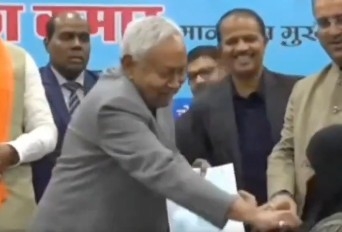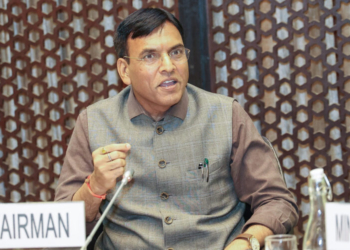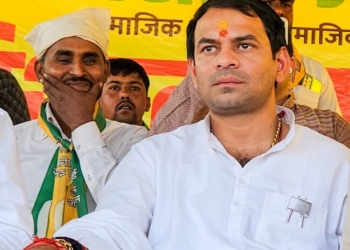New Delhi: As India marks a decade of the Pradhan Mantri Jan Dhan Yojana (PMJDY) on Wednesday, it would be interesting to examine the intricate planning of the economic framework that Prime Minister Narendra Modi envisioned from the outset.
Jan Dhan, launched within months of his tenure, was the first flagship initiative of PM Modi and stemmed from his own deeply held convictions rather than external expert recommendations.
The initial step was to establish the Jan Dhan scheme in 2014, followed by providing a legal framework for Aadhaar which happened in 2015-16. The new telecom policy of 2015 then enabled the Jan-Dhan Aadhaar and Mobile (JAM) trinity, which fundamentally transformed India by integrating the poorest individuals into formal financial systems. The JAM trinity played a crucial role in the successful implementation of the Jan Dhan scheme.
One of its key achievements was facilitating Direct Benefit Transfers (DBT) in 2014, which effectively eliminated the humiliation of standing in long queues to access rightful benefits and contributed significantly to poverty alleviation.
Secondly, the JAM trinity streamlined the disbursement of Mudra Loans in 2015. These collateral-free, affordable loans put an end to the dominance of informal sector loan sharks and the cycle of perpetual debt. To date, over 46 crore loans have been issued, according to available data.
Thirdly, the JAM trinity supported the implementation of a comprehensive social security system introduced by the government. This system, which includes life insurance, accident insurance, and pension schemes, reached more than 50 crore people who had previously been underserved. According to data, over 45 crore individuals are now beneficiaries of these programmes.
The PM Awaas Yojana is the fourth key area where the JAM trinity made a significant impact. Jan Dhan ensured that subsidies were effectively delivered to the intended, targeted, and deserving beneficiaries. To date, over 4 crore homes have been allocated under this scheme.
The fifth significant role of the JAM trinity was in crop insurance. The PM Fasal Bima Yojana, launched in 2016, succeeded where previous schemes had failed, primarily because it ensured that farmers received their insurance payouts when needed. According to experts, over 8 crore farmers have been covered under this scheme to date.
The sixth major role of the JAM trinity was in enabling the UPI (Unified Payments Interface) system for digital payments in 2016. Its exceptional mass adoption and success can be attributed to its connectivity across all segments of society. Data shows that India now accounts for 40 per cent of global digital payments.
The seventh major contribution of the JAM trinity was in implementing the Ayushman Bharat scheme. This initiative, the world’s largest health scheme, transformed what was once an unattainable dream for the poor into a reality. Today, over 50 crore beneficiaries in the country benefit from this programme.
The eighth major achievement facilitated by the JAM trinity was the launch of the Pradhan Mantri Kisan Samman Nidhi (PM-KISAN) scheme in 2019. This programme integrated marginal farmers into the financial system, allowing for direct reach and support. To date, over 11 crore farmers have been covered under this scheme.
The ninth major contribution of the JAM trinity was in providing crisis support. During the Covid-19 lockdown, its assured, timely, and leak-proof aid was crucial in assisting millions of people. This achievement played a vital role in helping the country navigate through the pandemic.
Last but not least, the JAM trinity facilitated the PM SVANidhi scheme for street vendors. The sophistication of the Jan Dhan system had advanced to the point where banks were confident in providing loans even to street vendors. So, the Jan Dhan not only addressed the basic needs of the poor but also sparked a digital revolution, fundamentally restoring dignity and empowerment to many. By eliminating middlemen, improving access to loans, and ensuring better healthcare, it created profound, positive impacts on the country’s development.
Among the significant economic reforms since 1991, Jan Dhan stands out as one of the most transformative, reflecting Prime Minister Modi’s visionary planning from 2014. Its enduring legacy is a testament to its remarkable success.
(IANS)
















